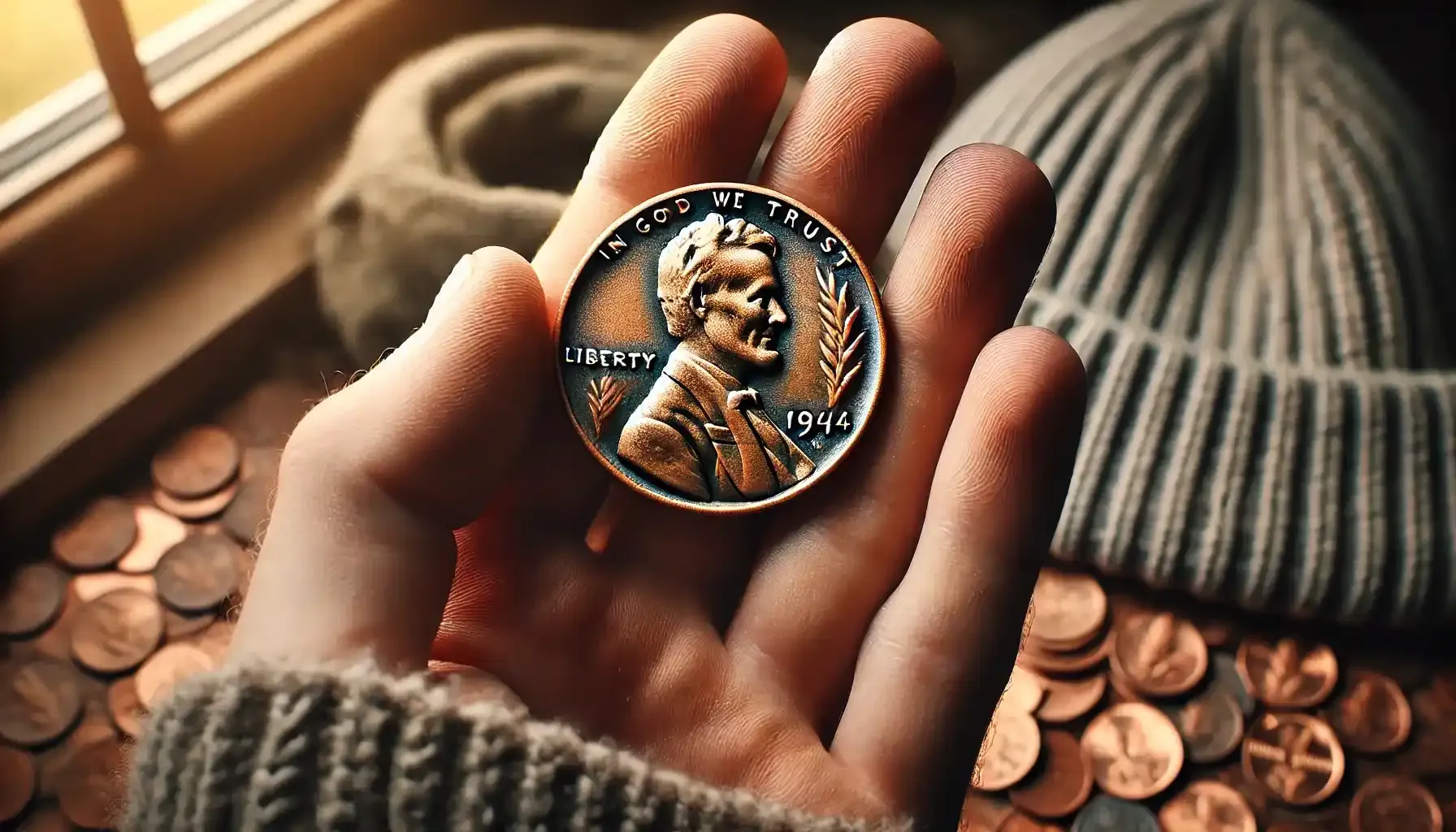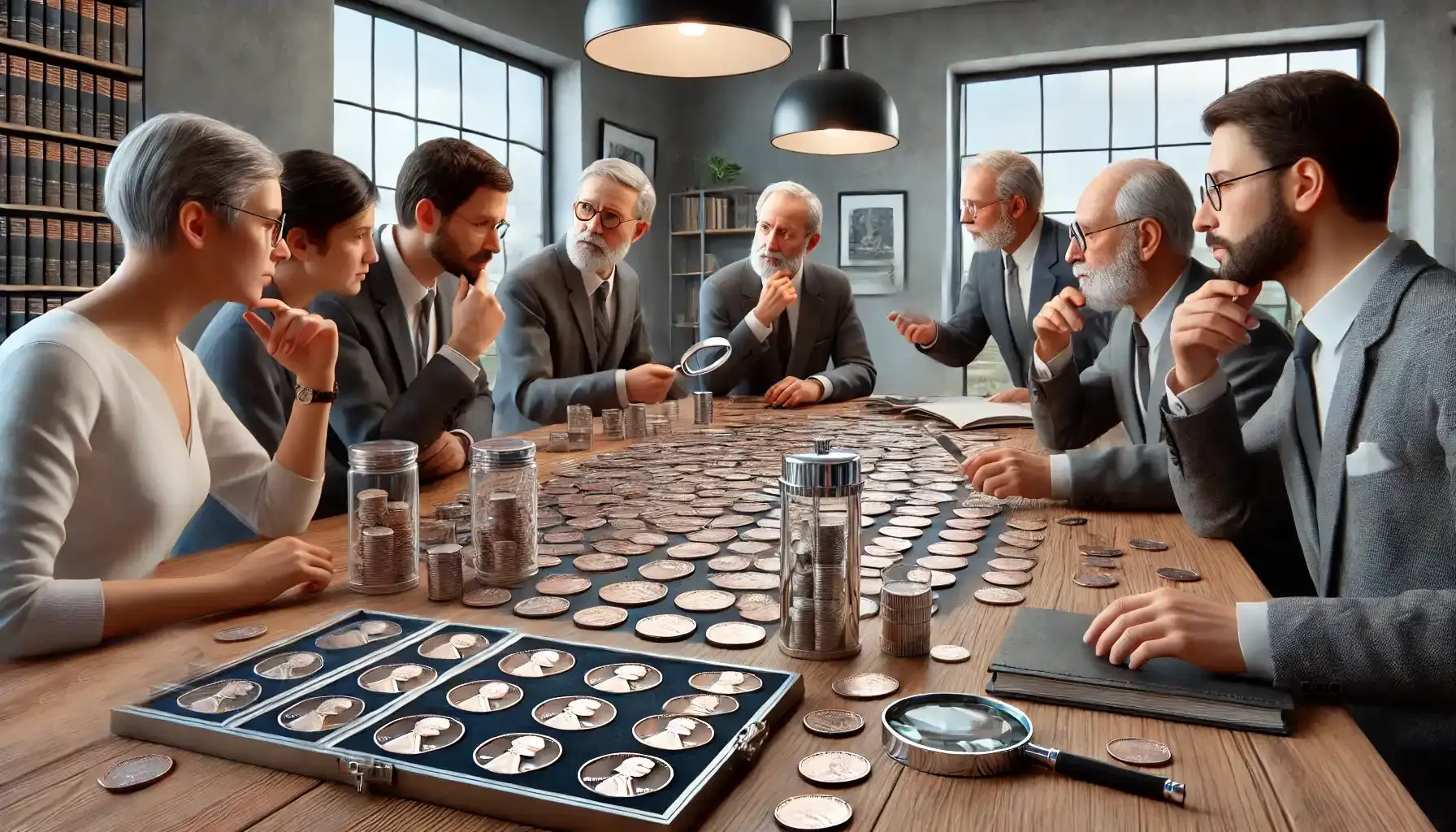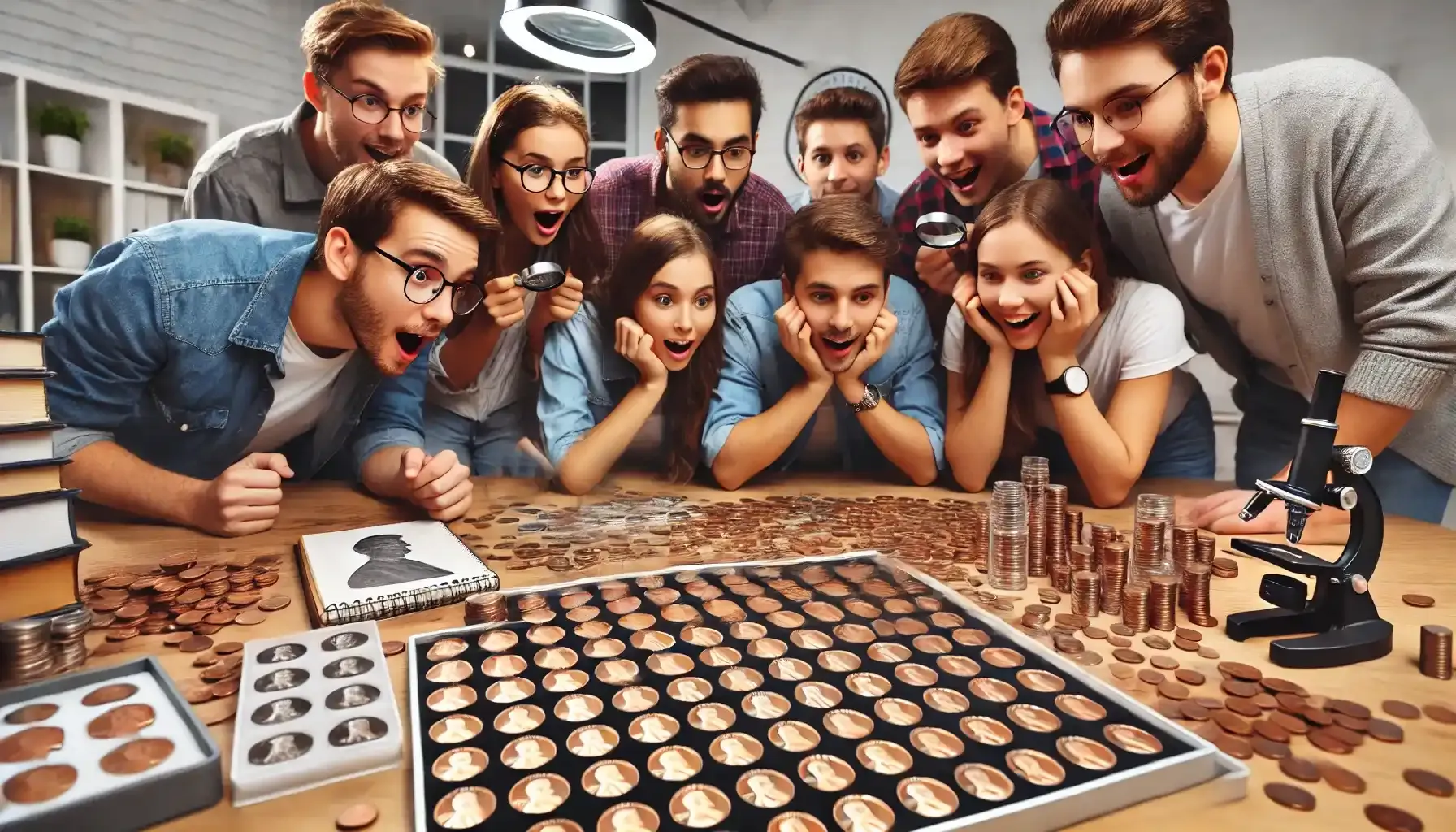Contents:
The Wheat Penny, also known as the Lincoln penny, is one of the most beloved and recognizable coins in the United States. First issued in 1909 to commemorate the 100th anniversary of Abraham Lincoln's birth, the penny became instantly popular due to its unusual design for the time. By 1944, the penny series already experienced many changes but retained its charm.
It can be said that 1944 was a notable year for pennies because of the huge mintage and some notable specimens that resulted from minting errors. While peni de 1944 are not rare in the general mass, there are a number of coins with unique errors and distinctive characteristics that are valued in the collectors' market. So here we will discuss the 1944 penny with no mint mark and other examples in more detail to understand what 1944 penny error makes a coin truly interesting, what is the 1944 no mint mark wheat penny value, is it possible to find rare pieces today and how to check the value of these coins (common and misprint examples).

Wartime Coins: Features and Details
Copper Penny Cartridges
By 1944, the "Wheat" series already took root in American culture for a long time. But this was the year that the story of the centavo de dolar de 1944 took on a new twist. With wartime constraints and the need to conserve resources, it seemed that even the simplest of coins carried significance for the entire country.
By 1944, World War II was in full swing, and copper was a strategically important material. In 1943, the Mint used zinc-coated steel blanks to save copper. But in 1944, the US Mint reverted to the familiar 1944 copper wheat penny with no mint mark (from Philadelphia/ with marks of other mints), using remelted military cartridge cases. Thus, the 1944 copper penny with no mint mark became a symbol of the unity of the country and a witness to history.

Interesting fact: Although many people think that the 1944 pennies were minted from “pure” copper, they actually contained about 95% copper and 5% impurities, which gave the coins not only a firmness but also an interesting hue.
Design, Circulation and Rarity
The design of the 1944 penny remained traditional for this series. The obverse of the penny features a portrait of Abraham Lincoln framed by the words “IN GOD WE TRUST” above his head, as well as the inscription “LIBERTY” (at the left) and the year of issue (at the right). The reverse, on the other hand, features two ears framing the coin, with the words “ONE CENT” and “UNITED STATES OF AMERICA” in the middle. This simple and elegant design remained unchanged throughout the series until 1958.
Pennies were issued in three mints, so accordingly 1944 penny mint marks are as follows:
1944 penny no mint mark for Philadelphia: approximately 1.435 billion coins issued. P mint mark on 1944 penny and other coins was not traditionally struck until 1980
D for Denver: about 430 million coins were issued.
S for San Francisco: about 282 million pieces were issued.

Based on the data of minting and years of issue, it is clear that the 1944 wheat penny no mint mark value is not high, the coin is not unique or at least rare due to the huge circulation of issues and it can be found in circulation even today. By the way, the same might be said about some iterations of the Queen Elizabeth Canada coin, however pompous and mighty it is usually seen.
You may find estimated 1944 wheat penny value (no mint mark, D and S marks) in the table below.
Coin | Approximate range of value depending on the condition of the coin, $ |
1944 penny with no mint mark | 0.05–6 |
1944-D penny | 0.10–10 |
1944-S penny | 0.20–12 |
As you can see, the 1944 no mint mark penny value (along with other S and D coins) is not phenomenal, and the coin is worth just above face value. If you own one of the pennies and would like to evaluate its possible features, and market value, the Coin ID Scanner app can be a great assistant in identification and rough estimation and can help you quickly identify and determine if the coin is valuable.
Following from all of the above, it can be argued that the valor de penny de 1944 is high from a historical point of view and can still be in the field of collecting interest, as it is part of the “military” series. In addition, there are some very valuable 1944 wheat penny errors among the common variants.

Secrets of Minting: Valuable 1944 Penny Errors Becoming Worthy Collectibles
1944 wheat penny errors attract special attention of collectors, as it is the defects that make these coins unique and significantly increase their value.
These errors appeared at all mints that minted this year's coins - Philadelphia, Denver and San Francisco. Each of the errors has different characteristics and, accordingly, different degrees of rarity and value. Let's analyze the most interesting errors, which are of particular interest to collectors, and pay attention to their features and noteworthy facts.
Coin | Feature | Estimated Value | Possibility to Find |
1944 No Mint Penny with Double Die Obverse | Double die stamp on the obverse, the words “LIBERTY” and “1944” are duplicated | $40 - $500+ depending on the condition | Low |
1944 S Transitional Error | 1944 s penny errors include minting the coin incorrectly on a 1943 steel blank instead of bronze | $10,000 - $75,000+ | Extremely Low |
1944 D Wheat Penny Error with Additional S Mint Mark | A replacement stamp that has a double mint mark of “D” over “S” on the coin | $35 - $300 | Average |
1944 Wheat Penny (Mint Mark D, S, and no for Philadelphia) with Die Break | Cracks in the stamp also known as “cud errors” | $5 - $100+ depending on the size of defect | Average |
If you do enjoy collecting peculiar coins, do not hesitate to explore our new article about the 1916 D Mercury Dime. Rest assured, you will be surprised by its price!
Detailed Look at the Nuances
1. 1944 Doubled Die Obverse
Doubled Die Obverse is one of the most popular errors appearing on the 1944 penny. This error appears by doubling images or inscriptions, mostly on the word “LIBERTY” and the date, giving the coin a unique look. Although these pennies are not very common, they are more frequent than other errors, hence this 1944 penny value (no mint mark exemplar) is slightly lower than other unusual specimens.

2. 1944 S Transitional Error
One of the rarest specimens is a penny minted in 1944 in San Francisco on steel blanks. In theory, the mint should have switched back to copper by this year, but some steel blanks remained from 1943, causing this unique error. The likelihood of finding it is extremely low, which puts this error coin in a place of honor in any collection.
3. 1944 D/S — Doubled Mint Mark
The double mint stamp error, D/S (imprint of a “D” mark on an “S” mark), is also rare. This defect occurs when two different marks, “D” over “S”, are accidentally stamped on a coin. This error appeared when mints over-utilized stamps by moving them between different mints (especially in those years when resources were limited due to World War II). Because of the difficulty of detection and rarity, this 1944 error penny is especially prized by collectors.

4. 1944 Die Break
Die Break error is the presence of cracks or protrusions on a coin caused by damage to the stamp. This damage can appear in the form of small breaks or bulges on the surface of the coin (which are known in the collecting world as “cud errors”). In the case of the 1944 penny, these errors are found on coins from all three mints - Philadelphia, Denver and San Francisco. Interestingly, the size and shape of these defects can vary considerably. This error one cent 1944 valor can vary depending on the size and location of the defect.

A Legacy Available to Everyone
The 1944 penny series are the coins with a rich history and some interesting variations. While these coins are not rare and most remain in circulation, the presence of errors and wartime features make them particularly popular. In standard form they are inexpensive, but some misprint examples can bring a significant profit. Thus, a seemingly simple coin turns out to be part of a rich cultural asset and a collector's item.



